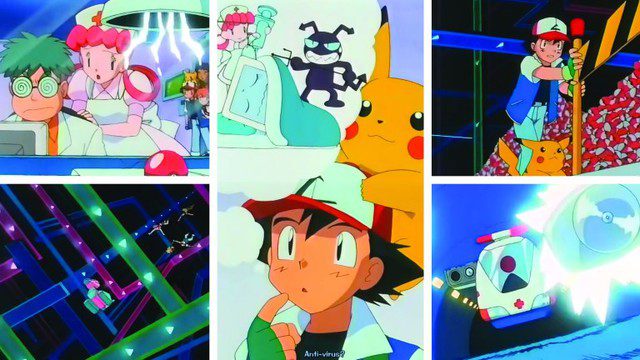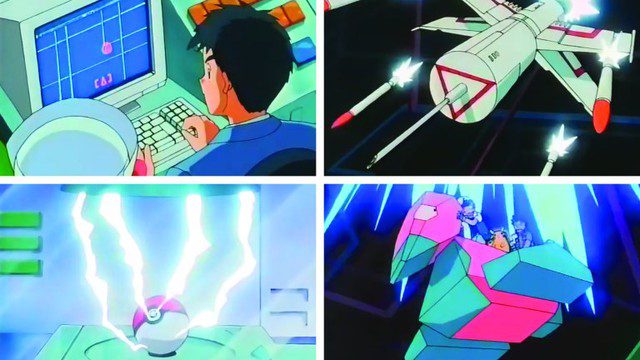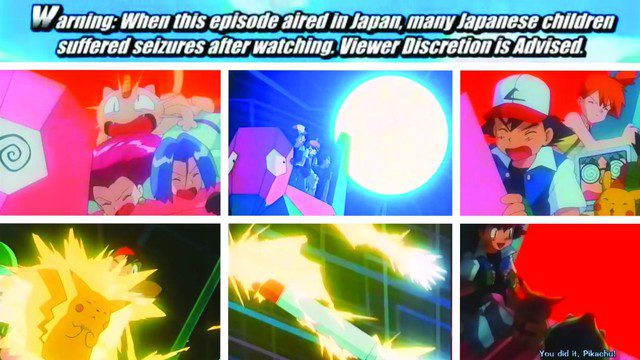In the history of anime, there are episodes that leave a profound impact on viewers due to their captivating content, yet also because of their unexpected and intense nature. However, episode 38 of the Pokémon series, known by various names such as “Cyber Soldier Porygon,” “Computer Warrior Porygon,” or “Electric Soldier Porygon,” stands out in history for an entirely different reason: it caused a severe seizure epidemic, leading to a worldwide ban on the airing of the episode.
This notoriety is not merely due to any sensitive content (even though the episode does feature some contentious themes), but rather because the animation itself became a hazardous experience for viewers. While rapid flashing lights can trigger seizures in many individuals, this episode created broader effects related to physical health, commerce, and society.
This incident became so famous that it was referenced in various other programs. The Simpsons parodied this Pokémon episode in their “Thirty Minutes over Tokyo” episode, where the family experiences seizures after watching the “Battling Seizure Robots” segment. Similarly, in the South Park episode “Chinpokomon,” Kenny McCormick dies after experiencing seizures from playing a Chinpokomon video game. Although these parodies are comedic in nature, the events surrounding that Pokémon episode were not a joke.

What Happened in the Pokémon Episode “The Destiny”?
This episode, in addition to some controversial scenes, begins with Misty, Ash, Brock, Pikachu, and other Pokémon resting. When Pikachu gets into trouble, they decide to visit the Pokémon Center near Matcha City. However, Nurse Joy and the nurse Akihabara are seen struggling with the Pokémon transport machine being out of order. Since Nurse Akihabara is the developer of the system, both of them go to Mr. Okabe, who set up the main Pokémon transportation system.
Nurse Akihabara explains that using the virus extermination software could harm individuals affected by the system. With the help of Porygon Unit 01, Ash, Brock, Misty, and Pikachu enter the transport machine to thwart Team Rocket, but they inadvertently activate Porygon Unit 00 and infiltrate the internet to capture Pokémon for transport.

As Porygon assists the group in navigating through the internet, they spot Team Rocket trying to collect the Pokémon balls that are being transported, causing system malfunctions. During Team Rocket’s battle with Porygon Unit 01 using Porygon Unit 00, Ash’s group struggles to fix the malfunctioning Pokémon balls being transported. Meanwhile, the teacher receives a call from Nurse Joy informing him that an IT specialist has arrived at the Pokémon Center to help resolve the issue after she embedded the virus extermination software into the system.
The virus extermination software infiltrates the system disguised as a common truck and airplane, with the aim to disrupt Team Rocket’s operations, as they are indeed a virus. At the moment Ash’s team is “under attack” by this software, they struggle to escape while being trapped in Porygon’s body, making it a pivotal episode, as the flashing lights created by the virus generated a strong strobe effect.
After several minutes of intense flashing lights, Ash’s group and Team Rocket finally manage to escape, but a strobe effect caused by the virus ultimately led to the teacher’s collapse, including the main Pokémon transport system at Mr. Okabe’s place. Nevertheless, the Pokémon transport machine at the Pokémon Center in Matcha City resumed operations, and Nurse Joy remains unaware of the horror that just took place.

What Were the Serious Consequences of This Pokémon Episode?
At 6:51:34 PM on December 16, 1997, following Pikachu’s Thunderbolt attack in the episode, the resulting flashing lights and colors caused seizures, nausea, dizziness, and other related symptoms for hundreds of viewers in Japan, resulting in over 700 individuals needing hospitalization and creating a mass panic that affected more than two thousand people.
The episode was immediately pulled from airing and became the only episode banned worldwide. TV Tokyo had to issue a public apology, with Nintendo compensating 12,200 yen, and the Pokémon anime was suspended from broadcasting for several months. This entire incident is now known as “Pokémon Shock.” The severity of this issue reached the Guinness World Records, which awarded Pokémon for “Most seizures triggered by flashing lights from a single television episode.”
Following this shocking event, Japanese broadcasters began airing warnings advising viewers not to sit too close to screens and to watch in well-lit rooms. To differentiate the series from others, Pokémon has avoided featuring Porygon in any significant roles, even though the direct cause of the seizures was Pikachu’s actions.
Fortunately, OLM (the anime production studio) removed the flashing effects caused by the virus extermination software from the later airings. The official Pokémon Twitter account even tweeted (later deleted) stating “Porygon did nothing wrong,” leading to memes with the same title. Despite this, some individuals still blamed Porygon for the incident, as Nintendo did not want to risk harming Pikachu’s image.
Source: Comicbook





















